Top 100 Picture Books Poll Results (#4)
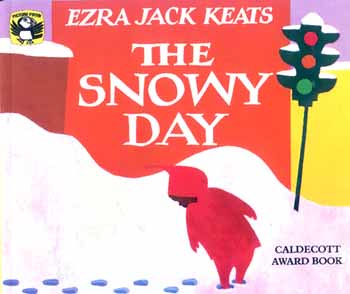 #4: The Snowy Day by Ezra Jack Keats (1962)
#4: The Snowy Day by Ezra Jack Keats (1962)
(25 votes, #4, #4, #4, #6, #6, #1, #8, #1, #2, #10, #1, #2, #3, #7, #1, #7, #3, #3, #5, #3, #7, #3, #2, #6, #2)
I know, I know, everybody loves this book. Well, me too. It’s a gorgeous depiction of an urban environment-turned-Paradise with the all that snow. This book still holds up as a thing of beauty. And it’s so simple. – Karen Ruelle
ADVERTISEMENT
ADVERTISEMENT
Another extremely beautiful book. A spot-on depiction of a young child’s intense and creative interest in his world. Seemingly very quiet, but it covers many emotions — the excitement of stepping out alone into a snowy world, fascination with the snow, satisfaction at making ones mark on the world with sticks and snow angels, longing and shyness at the big boys’ snowball fight, surprise and disappointment at the melting of the snowball in the pocket, the joy of sharing the snow with a friend. – Anna Hebner
According to Keats, "The purpose of the book and the subject matter of the book was so strong that my style changed completely. I had never painted that way before. It turned out to be the beginning of a whole new style to me because I was so deeply involved." Classic. And how.
From my review: In this book, Peter wakes up to discover that snow has covered the city in the night. Delighted, he pulls on his bright red (and now world-known) snowsuit and plunges into a day of exploring and playing. He makes fun tracks, and hits snow off the branches of trees. He constructs a smiling snowman and slides down steep mountains of white powder. At the end of the day his mother gets him out of his wet clothes and gives him a nice hot bath. The next morning the snow is still there, and an ecstatic Peter calls up a friend to do the whole day over again.
100 Best Books for Children gives some additional background information on the book. "Today it is hard to believe that critics virulently attacked Ezra Jack Keats and that The Snowy Day was one of the most controversial children’s books of the 1960s . . . During the late 1960s and 1970s Keats . . . was accused of everything from stereotyped characters to having no right, as a white man, to feature black children in his books." Some confusion continues to exist today over Keats’ race. When I complained that this Top 100 Picture Books Poll was lacking in diversity, one commenter said, "Wasn’t Whistle for Willy in there? For a multicultural author?" And since Willy is, in effect, Snowy Day‘s sequel, you can see where the confusion lies (Peter, for the record, would go on to also appear in Peter’s Chair, A Letter to Amy, Goggles, Hi Cat!, and Pet Show).
Leonard Marcus addresses this assumption in Minders of Make-Believe. "Many readers at the time assumed that the artist, too, must be black, but Keats (born Jacob Ezra Katz on March 11, 1916) was in fact the first-generation American son of eastern European Jewish immigrants who had settled in Brooklyn during the late 1800s." It goes on to talk about how the year The Snowy Day won the Caldecott, A Wrinkle in Time won the Newbery. I was particularly impressed with last year’s winning Selznick/Schlitz combination of talks, but if I could see any other ceremony, a Keats/L’Engle wouldn’t be too shabby. However, if I don’t miss my guess the ceremonies were separate at that time (1963). A pity.
Consulting my Dear Genius I see that Harper editor Ursula Nordstrom did in fact publish Ezra Jack Keats, but only after the publication of Snowy Day and Whistle for Willie with Viking. Her May 2, 1966 letter to him begins, "Dear Ezra: Damn it, here it is bright and early Monday a.m. and I can’t get you on the ‘phone. I suppose you are out helling around with another children’s book editor – and I hate her." Is "helling around" an actual phrase? And if it is, may I adopt it?
Generally I have found that The Norton Anthology of Children’s Literature has, in the course of this poll, been insufficient to my needs. Granted, it is trying to look at the wide scope of children’s literature, not limiting it to a single country or time. That said, it seems odd that The Snowy Day would garner only a single page in a 2471+ page tome. Of this book it says, "Keats’s technique of collage strikingly depicts the urban scene, which presents a grim contrast with his characters’ constant delight and interest in the world. This Caldecott Medal-winner was one of the first picture books to confront the invisibility of black people in children’s books, as it provided a black central character – although some critics complained that Keats did not escape stereotypes." What stereotypes might those be? Writing in the Saturday Review, a Nancy Larrick said of the book that it was flawed "for omitting the word [Negro] in the text" as well as making the mom "a huge figure in a gaudy yellow plaid dress, albeit without a red bandana." Larrick could not have predicted that the inclusion of the word "negro" in the book would actually make it more dated and offensive in the future, rather than less. As for the mother character, I don’t think anyone reading the book today would think of her as Larrick has suggested. Sometimes a yellow dress is just a yellow dress.
Eric Carle might have his own museum, but Mr. Keats inspired a veritable foundation. According to their website, "Ezra Jack Keats created the foundation in 1964 as a vehicle for his personal giving. Author of many classic books for children, including the Caldecott-winning book The Snowy Day, Keats determined that his foundation would be dedicated to fostering the talent of the generations of children, artists, and authors who would follow him. When he died in 1983, his will directed that the royalties from his books be used by the Foundation for the support of programs helpful to humanity. The Ezra Jack Keats Foundation is now known for its pioneering support of bookmaking and storytelling programs, art and scholarly fellowships, portrait projects, book festivals, public libraries and schools, mural projects throughout all of the United States, as well as emerging authors and illustrators of children’s books." Better still, there’s an Ezra Jack Keats Award given yearly to "recognize and encourage talented new children’s book authors and illustrators, who, in the spirit of Ezra Jack Keats, create vividly written and illustrated books for children (age 9 and under) that offer fresh and positive views of the multicultural world inhabited by children today." The full list of award winner is viewable here.
ADVERTISEMENT
ADVERTISEMENT
The de Grummond Collection at The University of Southern Mississippi is the sole repository for the Ezra Jack Keats Archive and on their website I found the Ezra Jack Keats Virtual Exhibit. Amongst its useful images is a copy of the photograph from Life magazine (circa May 13, 1940) that served as the original inspiration for Peter.
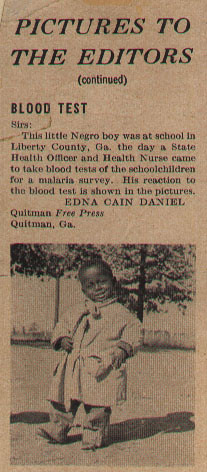
They also have this photograph from the Caldecott Banquet. I don’t know who these people are, but I’m 100% sure that Mr. Keats is on the left. Tiny moustache-sporter he was not.

From the site, they’ve also this bit of information about Mr. Keats, involving the Caldecott Banquet speech. "When Benjamin Katz [Ezra’s father] died on January 1935, Keats, on the day before his high school graduation, had to identify his father’s body. For the first time he learned that his father had been proud of his work. In his Caldecott Medal speech in 1963, Keats shared the experience. ‘I found myself staring deep into his secret feelings. There in his wallet were worn and tattered newspaper clippings of the notices of the awards I had won. My silent admirer and supplier, he had been torn between his dread of my leading a life of hardship and his real pride in my work’."
Related Sidenote: Cutest. Picture. Ever.
Peter, for the record, has a statue of his own, though you won’t often hear of it. Yet located in Prospect Park in Brooklyn, New York there is a little area called Imagination Playground. There you will find Peter and Willie.
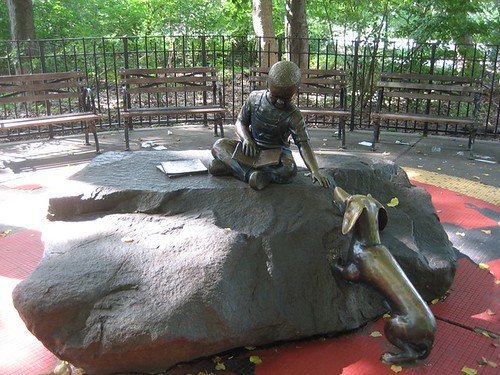
They were sculpted by artist Otto Neals and were unveiled in 1997. One of these days I’ll make a pilgrimage to see them for myself.
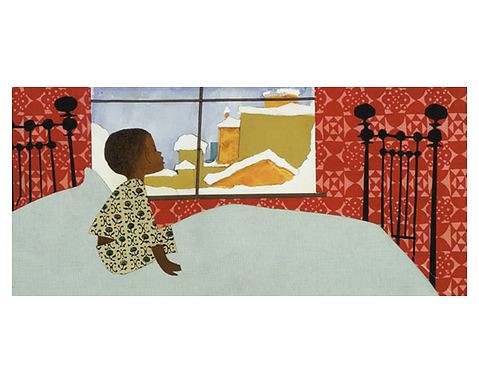
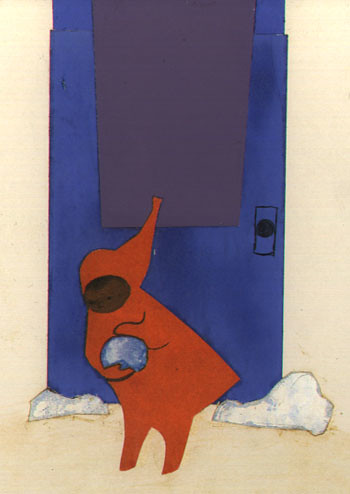
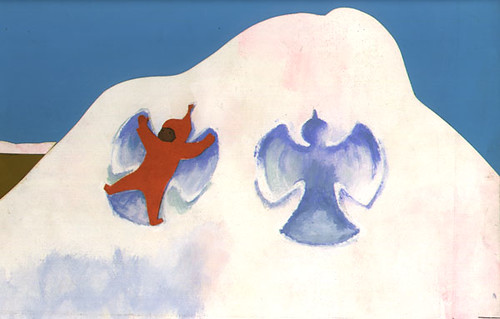
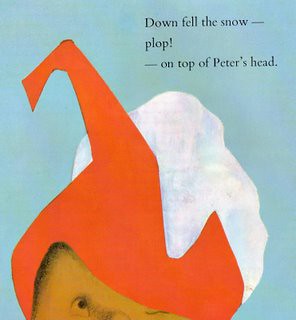
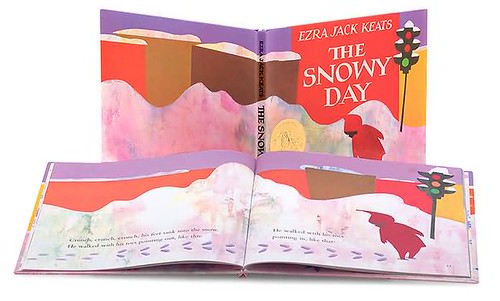
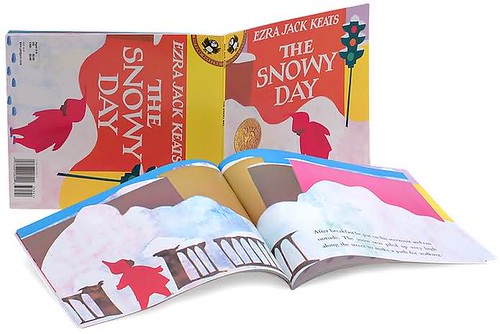
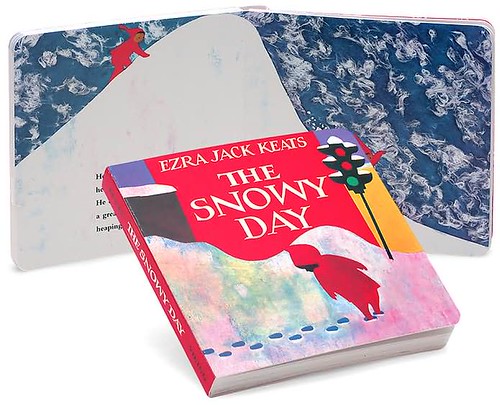
Previous Top 100 Picture Book Posts include:
Filed under: Uncategorized
About Betsy Bird
Betsy Bird is currently the Collection Development Manager of the Evanston Public Library system and a former Materials Specialist for New York Public Library. She has served on Newbery, written for Horn Book, and has done other lovely little things that she'd love to tell you about but that she's sure you'd find more interesting to hear of in person. Her opinions are her own and do not reflect those of EPL, SLJ, or any of the other acronyms you might be able to name. Follow her on Twitter: @fuseeight.
ADVERTISEMENT
ADVERTISEMENT
SLJ Blog Network
One Star Review, Guess Who? (#202)
More Geronimo Stilton Graphic Novels Coming from Papercutz | News
Parsing Religion in Public Schools
Environmental Mystery for Middle Grade Readers, a guest post by Rae Chalmers
ADVERTISEMENT








I’m sure there are graduate students in psychotherapy who are hard at work studying how to help someone so obsessed with which fictional icons make a list that they are up at 4:30 checking the web, ready to throw tantrum if the little boy with the stick was ostracized. I had myself convinced that in a battle between Peter and the altruistic elephant, Peter would be left with a pocket of naught; I was truly ready to burst into tears. I am truly pacified. (This leads me to wonder if I should be as sure as I am of my top three. Come on fess up, Ms. Bird; is there some kind of a tying vote that will allow four more books to still be viable? How could all Seuss be relegated to the back quarter of the list? Or did most disregard the early reader exclusion?)
Betty – I don’t know what is more exciting, to see what the book will be each day or what you tell us about it. I love that “The Snowy Day” picture and I too have put the statue in the park on places to take my daughter some day – soon! Again…THANK YOU for all of your hard work.
You say the banquets were separate at that time, and maybe I’m nuts, but COULD that woman on the right in the Caldecott Medal Banquet picture be Madeleine L’Engle? She was very tall, and the shape of her face is the same….
I think I’m onto something. The site won’t let me post the link here, but on Google images, you can find a picture of Madeleine L’Engle and Hugh Franklin at their marriage in 1945, and I think we’ve found the man with the mustache. And the woman’s smile sure looks the same as Madeleine’s. You’re right. Wouldn’t that have been a wonderful banquet to attend?
If you ever get a chance to go to the Children’s Book Festival at USM, don’t pass it up (or the museum).
USM also has a great SLIS program for those interested in children’s literature.
I am beyond surprised that there has been no Mercer Mayer on this list. Granted I didn’t vote, but I would have thought that at least There’s A Nightmare in My Closet would have made it!
I’m so happy to see this book in the top 10. I have always loved this beautiful book.
By the way, my daughter had a book exhibited at your very library, Betsy–back when it was in the Donnell–as part of the Ezra Jack Keats Bookmaking Competition. Very cool!
Awesome! And re: L’Engle, you’re dead right Sondy. That’s her. I got distracted by the hair, I think. The banquets may well have been together. I’ll double check with the resident authorities on the matter.
Hmm. I went Googling for a picture of Frances Clarke Sayers and I think she might be in the picture. My suspicion is that both women were on the Caldecott and Newberry Committees. Perhaps Peter of Collecting Children’s Books would have the answer…
I’ve been surprised by no Seuss as well. But I’m guessing, in uncertain order: Goodnight Moon, A Cat in the Hat and Where the Wild Things for our final three.
Bonny…more likely Goodnight Moon, Very Hungry Caterpillar and Where the Wild Things Are…(cat in the hat is excluded b/c it’s an easy reader)….
It’s funny, as a kid I thought “A Snowy Day” was the most boring book ever made. Perhaps it was the ubiquitous snow in northern Maine, but I remember thinking, “uh, yeah, I do this on a weekly, if not daily, basis…why did someone think it was interesting enough to write a book about?” And now I absolutely love the book, although I no longer love the snow.
I believe that the Keats Collection is at the University of Southern Mississippi not Missouri. That’s where the de Grummond Collection is located.
Where the Wild Things Are, The Very Hungry Caterpillar and ….I’m still trying to make my mind up of which I think will be #3
I agree with Eric. Betsy, this has been such fun, even if I do have a few disappointments. (A list of plucky heroines just for Brave Irene?) Thank you again for all your hard work!
I’m thinking that the last three will be Goodnight Moon, WTWTA, and Very Hungry Caterpillar. But I’m hoping my “wild card” vote for “The man who walked between the towers” will beat Moon. What fun this all is! And today I finally received “Miss Fanshawe” so I can get back to reading the books in countdown order with my 11-year-old.
Eric has it – 3, 2. 1. Unless there is a tie and Horton made the list twice.
I’m so glad that The Snowy Day made it so far on the list. Ezra was a wonderful person. In the 1970’s he traveled to North Carolina twice (he paid for the trips himself) to visit my mother’s small elementary school library. It was an incredible experience for the children of the school, most of whom were poor and rarely left our town. Mom and Ezra became friends and she went to visit him every spring until he died.
Yep, I think Eric’s right, and that gives me 6/10 on my guesses for the top ten.
On my original list, I only had 2 of the top ten, and six that got into the list of 100. But I think the four that I listed that didn’t make the list should have!
I have met so many African American individuals who have told me of seeing THE SNOWY DAY for the first time as a child and realizing children “who looked like me” could be in books. I admire the book even more now than I did years ago as I add to this collection of remembrances and the new love for reading it has given so many.
I think it’s worth noting that every time I tell my 8 year old daughter the next book on this list, she invariably remarks, “I LOVE that book!” This one no exception.